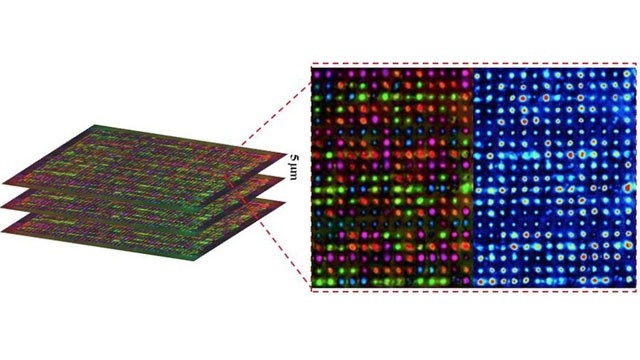-
Tips for becoming a good boxer - November 6, 2020
-
7 expert tips for making your hens night a memorable one - November 6, 2020
-
5 reasons to host your Christmas party on a cruise boat - November 6, 2020
-
What to do when you’re charged with a crime - November 6, 2020
-
Should you get one or multiple dogs? Here’s all you need to know - November 3, 2020
-
A Guide: How to Build Your Very Own Magic Mirror - February 14, 2019
-
Our Top Inspirational Baseball Stars - November 24, 2018
-
Five Tech Tools That Will Help You Turn Your Blog into a Business - November 24, 2018
-
How to Indulge on Vacation without Expanding Your Waist - November 9, 2018
-
5 Strategies for Businesses to Appeal to Today’s Increasingly Mobile-Crazed Customers - November 9, 2018
Small Glass Disc Could Store Massive Amount of Data “For Eternity”
In this particular case, documents are recorded to the glass disk using an ultrafast laser that hits the three layers of nano-structured dots with short, strong light pulses.
Advertisement
The new method, called “five-dimensional” data storage, uses lasers to encode information on microscopic structures within glass.
Each disc can handle up to 360 terabytes of data, the equivalent of 720 million photos or 684 years’ worth of uninterrupted music playback. The discs are stable up to 1,000 °C, but the scientsists say that at room temperature, they would last forever.
Although the Southampton team is still actively looking for industry partners to commercialize the new technology, this particular approach to nano-structured glass data storage is expected to be used by national archives, museums, and libraries.
The self-assembled nanostructures alter the way light passes through glass, changing the polarization of light that can be read by a combination of an optical microscope and a polarizer, much like what occurs in a pair of Polaroid sunglasses.
The glass is being referred to as the “Superman memory crystal”, since it resembles the glass “memory crystals” used in the Superman films. It is called 5D as the information can be interpreted into five various dimensions of the nanostructures, namely, height, width, length, position and orientation.
The team will present their research at the International Society for Optical Engineering Conference in San Francisco on 17 February.
Professor Peter Kazansky, from the ORC, says: “It is thrilling to think that we have created the technology to preserve documents and information and store it in space for future generations”. That’s as old as the universe, and more than three times the age of the Earth.
“The demonstrated recording of the digital documents, which will survive the human race, including the eternal copies of Kings James Bible and Magna Carta, is a vital step towards an eternal archive”.
Funding research for new, innovative storage solutions may not be as sexy as other projects, but the backbone of the technology industry relies on these kinds of inventions to continue pushing forward – especially as more and more of us move beyond storing our information on traditional machines and towards areas such as the cloud due to a lack of storage capacity on physical systems.
Advertisement
Eternal 5D data storage of the Bible.




























